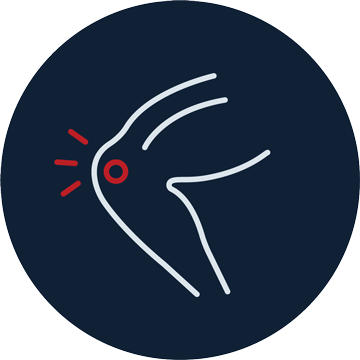
Knee Pain Treatment near Gilberton | Northern Spinal

Your knee is a complex joint with many components, making it vulnerable to a variety of injuries. Many knee injuries can be successfully treated with simple measures, such as bracing and rehabilitation exercises. Other injuries may require surgery to correct.
As one of Melbourne’s leading injury clinics in the northern suburbs and city; we provide care to all local Gilberton residents and surrounding communities.
We aim treat your knee pain as effectively and efficiently as possible, being conveniently located in the Melbourne City and Reservoir. Our team of allied health professionals including Osteopaths, Chiropractors, Physiotherapists & Podiatrists offer professional care to address the source of your problem and pain.
Before our practitioners can determine the appropriate solution for your specific knee injury treatment, they will thoroughly assess you with standard medical, Orthopedic and special Osteopathic tests.
Most people have had a minor knee injury at one time or another. Most of the time our body movements do not cause problems, but it’s not surprising that knee injury symptoms develop from everyday wear and tear, overuse, or injury. Knee injury and pain most often occur during sports or recreational activities, work-related tasks, or home projects.

Knee Injury & Pain Types:
Patella Tendonitis – AKA Jumpers Knees
The patella tendon is located between the patella (kneecap) and the bony prominence on the shin known as the tibial tuberosity.
Due to its attachment locations the patella tendon helps to carry out a kicking motion, as it allows the force from the quadriceps muscles to cross the knee joint.
Patella tendonitis occurs when the tendon becomes irritated and inflamed. This condition is also known as ‘jumper’s knee’ as it is most commonly seen in athletes who jump repeatedly.
Patella Tendonitis – Causes
It is caused by repetitive overload of the tendon, where the body cannot heal the small damage unless the aggravating activity is stopped.
Patella tendonitis usually presents with pain over the tendon itself. It can be tender and swollen and crepitis or ‘crunching’ may be noticed upon activity. Aggravating activities include jumping, kneeling or kicking.

Patella Tendonitis – Common Knee Injury Treatment
A common recommendation is the RICE-protocol (rest, ice, compression, elevation).
It is important to rest during this condition and to eliminate aggravating activities so that healing can begin. Pain and swelling can be decreased with an icing regime, or non steroidal anti-inflammatory drugs (NSAIDs) may be recommended by your osteopath.
After progressing with treatment it is important to strengthen the quadriceps muscles and associated tendons by completing eccentric muscle strengthening programmes.





